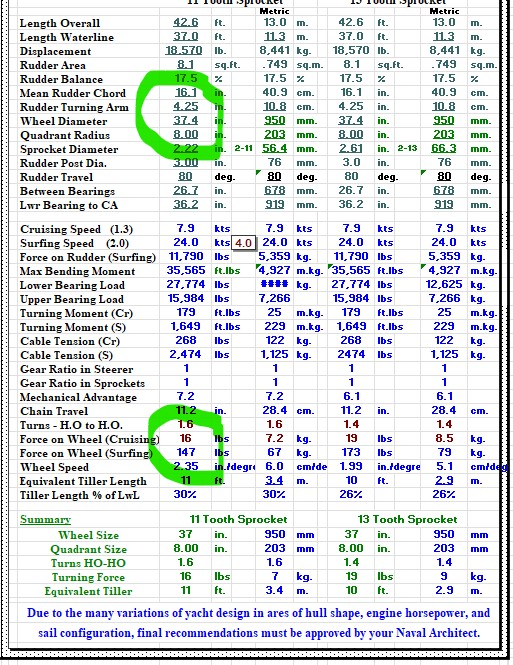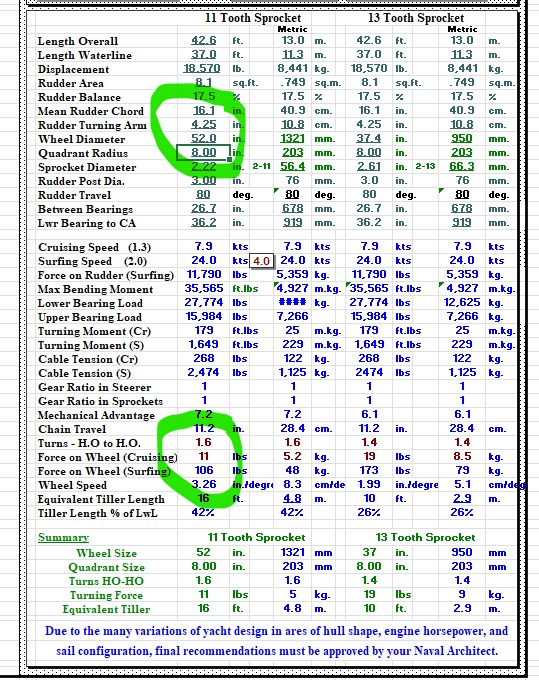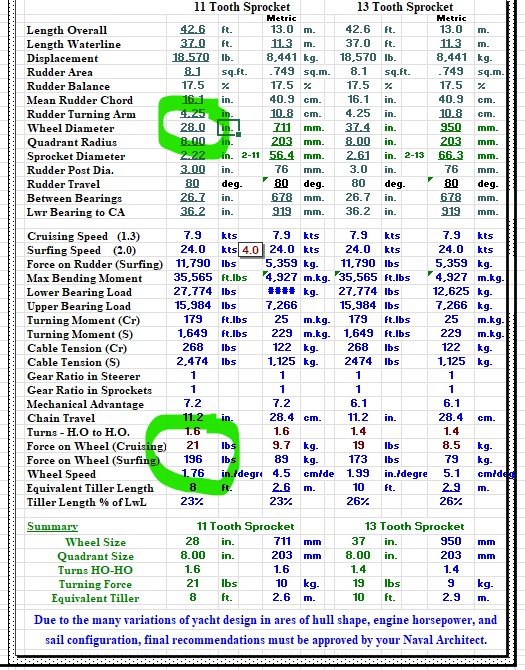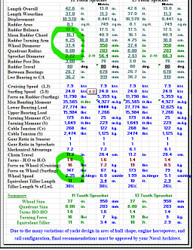How wheel size affects steering
Posted by Dave on Jan 27th 2023
A couple of posts ago, we alluded to the effect that a different size wheel will have on steering. In addition to practical considerations like making it impossible to move around the cockpit or having the wheel clang against the floor or cockpit seats, changing the wheel diameter will affect the load you feel in your hand while steering. This probably makes intuitive sense.
A larger diameter wheel gives you greater leverage over the steering forces generated by the rudder. This makes the steering forces feel "lighter," where going to a smaller wheel makes the steering forces feel greater. Note that the forces transmitted to the wheel are unchanged, but how you interpret them changes. There are different ways to change the actual force that the rudder generates. Heel angle of the boat, balance of the sail plan and sail trim, boat weight, speed, and rudder shape/size/balance will all change how much rudder force is generated. For those of you familiar with polar diagrams, the rudder load map of your boat will roughly match the polar diagram - where the polars go out, rudder loads are high and vice versa.
When we design steering systems, we take all of those loads into account as well as possible and tailor the gear ratio to be appropriate to the desired helm loading. Helm loading is an interesting one, as you and I could easily have different preferences given different sailing styles, and it also affects the responsiveness of the steering. Steering with a higher gear ratio will be lighter and take more degrees of wheel turn to turn the boat a given amount. We have superyachts with our steering that take 10 turns to do the full (standard) 72* steering sweep, while your standard 35 footer will only take one-and-change wheel turns to go from hard-over to hard-over. 10 turns stop-to-stop gets a little dicey when you're bringing a 120 footer into the slip, so these boats often have variable steering gearing - a topic for another post
Wheel size is downstream of all of that, so it will only affect your ability to manage those stresses. Have a look at the three images below, which come off of a worksheet that we use when working on a new project. Note how the smallest wheel (wheel diameter is in the top green circle) yield different forces felt on the wheel (bottom green circle).



If you look between the two circles on each of these, you'll notice that the "Force on Rudder (Surfing)" value doesn't change. That's the root force that the boat is generating on the rudder. But the "Force on Wheel" value changes by quite a bit.
Notice also that "Turns HO-HO" (hard over one way to hard over the other way) stays at 1.6 in all three sheets. The big change that you'll feel here is the amount of distance your hands will move to make any given direction change. Sailing upwind in steady displacement conditions, a large wheel will give a huge degree of resolution - you move the wheel a hand-width or two and that's a very subtle adjustment. The same movement with a tiny wheel would send the crew scrambling to prepare for a tack. The other side of this is downwind in feisty breeze and waves. Smaller wheels give you an amazing ability to quickly change course for changes in wave or apparent wind dynamics.
Fundamentally, if the naval architect and steering designer have done their job correctly, your steering should feel pretty darn good for your boat's intended purpose. But changing the wheel diameter will have an impact on the force feel in your hands and what you do with it.

